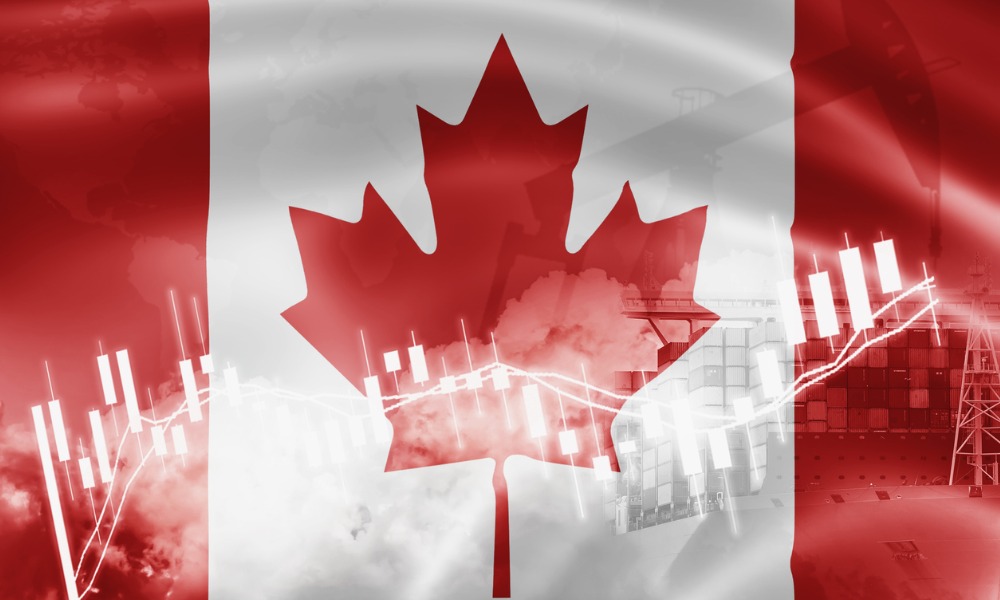After launching 'best in Canada ETFs' one asset manager outlines how our country's few dominant players and less competitive landscape can impact returns for pensions

It’s a quick joke bandied about by asset managers and ordinary Canadians, that this country’s economy is really just six banks, three grocery chains, and three telecoms in a trench coat. Maybe it comes from living next to one of the most competitive economies in the world, maybe it comes from the relative lack of options across a range of sectors, but Canadian industry tends towards oligopoly, with a few large players dominating market share.
From an investment perspective, oligopolies can have some attractive qualities. So much so that Global X Canada recently launched a suite of ETFs labelled “best of Canada” with allocations to Telecommunications, Groceries & Staples, and Canadian Insurance providers. Chris McHaney, EVP Head of Investment Management and Strategy at Global X Canada explained what his firm sees as ‘best of Canada’ traits. He outlined the opportunities and risks that Canada’s oligopolies present to investors, as well as the Canadian economy. He highlighted, too, what institutions with CAD liabilities can use these equities to accomplish.
“I think part of it is due to the unique makeup of the Canadian economy, with a nation of 40 million we’re at a decent size but not anywhere near the scale of the US or even other large countries, and our population is spread over a huge geographical area, which tends to raise the costs for companies engaged with Canada trying to reach the end consumers,” McHaney says. “So you get this bifurcation of companies in Canada. We have industries that are large enough for a few dominant players to grow and do very well, but you don’t have industries big enough to sustain 10, 12, or 15 different companies of the same size that are all competing in the same space.”
While these large players are not the only companies Global X deems ‘best in Canada,’ there is quite a lot of overlap. Generally, McHaney says, the traits they see as most attractive tend to be the large-caps with significant liquidity. These are companies with long track records of success and operate at a large enough scale to be included in the TSX 60.
From an investment standpoint, the relative lack of competition in many Canadian sectors means that investors don’t run the risk of ‘picking the loser.’ While McHaney still insists on the importance of diversification even in these sectors with narrow leadership, he argues that investors can expect that an upward trend in a sector will be felt by all of its Canadian leaders to roughly equivalent degrees.
Canadian large-caps also come with an almost defining elevated dividend yield. Because these companies tend to be large, successful, and well-capitalized, they often return profit to shareholders in the form of dividends. They also tend to offer greater stability of returns over market cycles. McHaney notes that this is especially the case for Canada’s grocery giants and staple retailers like Dollarama. Those names can even experience an uptick during an economic slowdown.
While perhaps outside of the concern for investors, there is a notable consideration with these companies for the wider Canadian economy: that their dominance will stifle competition and innovation. McHaney says that they key to balancing success and stagnation lies with regulators, who he praises as allowing many of these companies to thrive while encouraging new players — notably in the realm of telecommunications. He pushes back on the thesis somewhat, too, noting that for certain innovations — like generative AI — scale is just as important as competition.
Concentration does bring some investment risk, though, and McHaney notes that as sectors get more narrow the more stock-specific risk occurs in a portfolio. It’s an area where he notes investors in Canadian leaders need to stay wary and alert. Concentration can also bring regulatory risk into force, as governments decide to enact antitrust regulation to prevent full-blown monopolies. McHaney, though, is confident that this represents a tail risk for Canadian companies as there is no apparent political will in this government to begin a trust-busting cycle. However, it’s another area to watch for in the likely event that Canada has an election in 2025.
As Canadian institutions and pension funds look at these names, McHaney believes there are a range of compelling factors commending them. While Canada only represents a small fraction of global capital markets, he is of the view that pension allocations should likely be above that percentage given their liabilities in Canadian dollars and their roots in Canada.
“It’s a great conversation to have about how much should be allocated to Canada,” McHaney says. “For Canadians who make their livelihood here in Canada and re probably going to retire here and have their retirement income generated off this economy, I think these names appeal to a lot of investors.”



